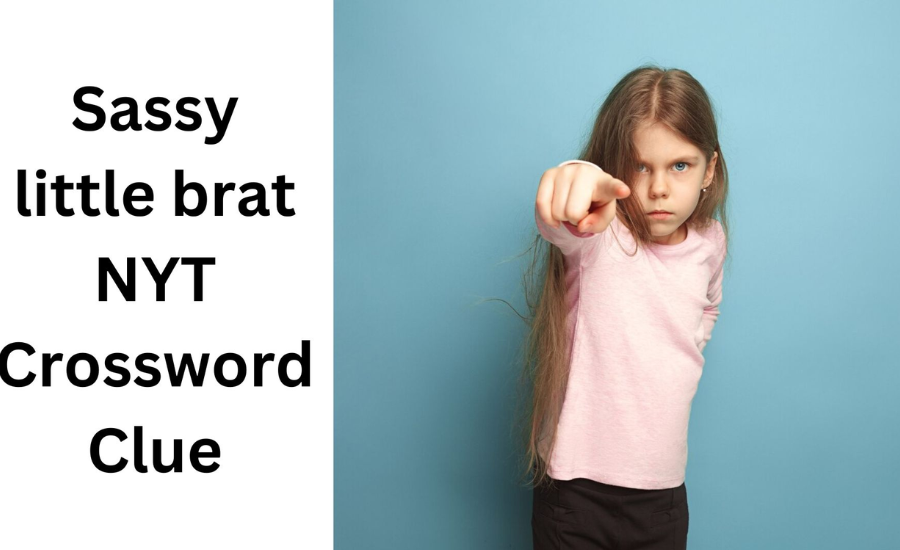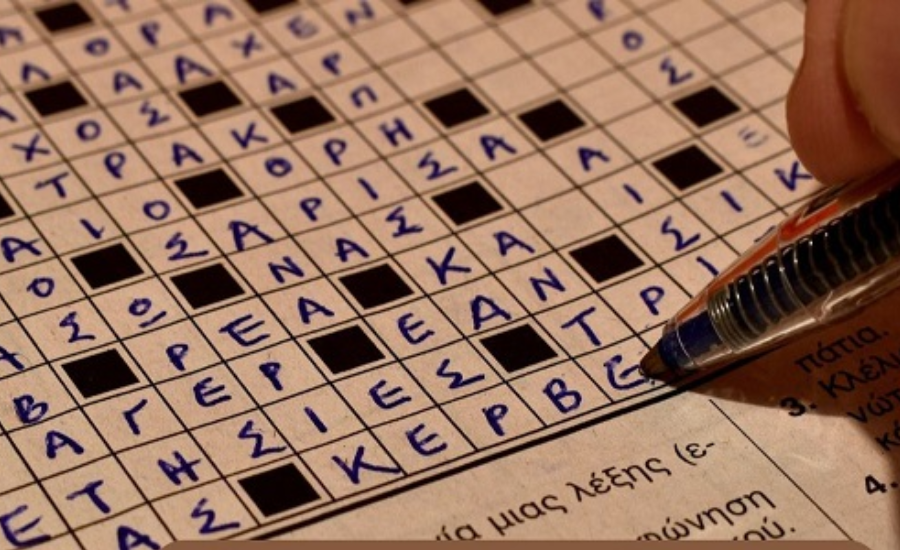In today’s digital era, certain phrases and stories can quickly capture the collective imagination, sparking lively discussions and debates across the internet. A recent example that has taken the spotlight is the term “Sassy Little Brat,” which gained popularity after being featured in a recent article by The New York Times. The phrase rapidly spread, becoming a trending topic on social media and igniting widespread interest.
But what is the origin of “Sassy Little Brat,” and why has it struck a chord with so many people? This article delves into the cultural significance of this viral term, exploring why it has resonated so deeply and what it reveals about the nature of modern media and society at large.
The phrase “Sassy Little Brat” embodies a particular attitude that is reflective of broader societal trends. It taps into a growing cultural conversation around personality, behavior, and how these are portrayed and perceived in media. The widespread reaction to the term highlights a collective fascination with candid, outspoken personas that challenge norms and defy expectations.
As the term continues to make waves online, it underscores the powerful role that language and media play in shaping public discourse. The popularity of “Sassy Little Brat” is a testament to how quickly ideas can spread in our interconnected world, and how certain expressions can become emblematic of larger cultural themes.
By examining the buzz around “Sassy Little Brat,” we gain insights into how media influences societal conversations and how phrases can encapsulate complex ideas that resonate with a wide audience. It also reflects the evolving ways in which we engage with content, as we navigate a landscape where viral moments can capture attention and provoke thought almost instantaneously.
Decoding The Sassy Little Brat NYT
The term “sassy little brat” generally describes a child who is playful, cheeky, or mischievously bold. However, when it comes to crossword puzzles, clues often carry a deeper layer of meaning beyond the obvious. To crack such clues, it’s important to consider synonyms or closely related words that align with the puzzle’s context.
Solving these clues requires thinking outside the box and exploring different interpretations of the phrase. It’s not just about the literal description but also about finding alternative expressions that capture the essence of a “sassy little brat” within the framework of the puzzle.
Origins Of “Sassy Little Brat NYT”

The phrase “Sassy Little Brat” gained prominence after it appeared in a New York Times article that explored the portrayal of bold and outspoken young characters in modern literature and media. In the piece, the term was used to describe a fictional character, sparking a broader conversation about the labels often assigned to strong-willed children, especially girls. The article examined how assertive and independent behaviors in young girls are frequently dismissed with negative terms, contrasting this with the more positive descriptors typically used for boys displaying similar traits.
The use of “Sassy Little Brat” in the article served to underscore the double standards prevalent in societal attitudes toward gender. Assertive behavior in boys is often celebrated as confidence and leadership, while in girls, it is more likely to be seen as defiance or disrespect. This critical examination of cultural biases resonated with many readers, leading the phrase to become a talking point across social media platforms.
Reflecting On Gender Bias And Societal Stereotypes
The widespread attention garnered by the NYT article on “Sassy Little Brat” reflects a broader recognition of the gender biases embedded in language and societal expectations. The phrase encapsulates the critique of how young girls are often unfairly judged for displaying confidence and independence, traits that are typically encouraged in boys. By labeling assertive girls with terms like “sassy” or “bratty,” society perpetuates stereotypes that diminish their value and discourage their self-expression.
The New York Times article used “Sassy Little Brat” to highlight these biases, suggesting that societal norms often penalize young girls for behaviors that would be praised in their male counterparts. This sparked a meaningful discussion about the power of language and its role in shaping perceptions. Many readers shared their own experiences of being labeled negatively for assertive behavior, further fueling the debate about the impact of these labels on young girls’ self-esteem and societal expectations.
Strategies For Solving Sassy Little Brat NYT
Leverage Cross Clues
A practical approach to tackling tough crossword clues is to examine the intersecting words, often known as the crosses. The letters you already have from these intersecting answers can greatly reduce the number of potential solutions. For instance, if you know the clue begins with “I” and ends with “P,” a word like “Imp” could be a likely fit.
Explore Synonyms
Think about synonyms and related terms, as crossword clues frequently use indirect or creative descriptions. For a clue like “sassy little brat,” consider all possible words that might describe a mischievous or cheeky child. Expanding your thinking to include alternative expressions can often lead you to the correct answer.
Helpful Resources for Crossword Enthusiasts
If you’re still finding a clue challenging, there are many resources that can assist you:
- Online Crossword Tools: Websites such as OneLook or Crossword Tracker can suggest possible answers based on the letters you have available, making it easier to fill in those tricky spots.
- Crossword Solver Apps: Apps like the New York Times Crossword app or general Crossword Solver apps can provide hints and suggestions that might guide you toward the right answer.
- Community and Forums: Engaging with online communities, such as Reddit’s r/crossword or other dedicated crossword forums, allows you to seek help, share strategies, and connect with other enthusiasts who might have insights into the clue you’re struggling with.
The Influence Of Language In Media Narratives
A significant reason the “Sassy Little Brat” article from The New York Times struck a chord with so many readers is its examination of the powerful role language plays in shaping media narratives. The article highlighted how specific terms, such as “sassy” and “brat,” carry implicit biases that can shape how society perceives assertive young girls. These words, often laden with negative connotations, can subtly reinforce traditional gender expectations, pushing young girls toward ideals of compliance and restraint.
The piece from the NYT invited readers to reflect critically on the language they use and its broader implications, particularly on the developing identities of children. This critical lens sparked widespread conversations across social media platforms, prompting many to call for more thoughtful and supportive language when describing children, especially those who challenge conventional gender roles. By choosing to bring “Sassy Little Brat” into the spotlight, The New York Times contributed to a larger dialogue about the need to reassess the language prevalent in media and daily interactions.
The Media’s Role In Driving Cultural Dialogue

The “Sassy Little Brat” article exemplifies the media’s significant influence in steering public conversations and challenging societal norms. As a leading publication, The New York Times has the power to elevate topics that provoke thought and encourage societal reflection. By highlighting the term “Sassy Little Brat,” the article underscored how media can serve as a platform to question ingrained biases and promote a more inclusive dialogue.
The impact of the piece has been widely recognized, with readers and commentators praising it for its daring approach to addressing gender stereotypes and the language associated with them. It has spurred a broader conversation about how we describe assertive behaviors in young girls and, by extension, the societal expectations placed on women. This dialogue has extended beyond the article itself, with educators, activists, and thought leaders continuing to explore and discuss the themes it raised.
The Role Of Social Media In Amplifying the Conversation
The widespread discussion surrounding “Sassy Little Brat” owes much of its momentum to social media platforms like Twitter, Facebook, and Instagram. These platforms have been instrumental in elevating the conversation, with hashtags and discussions trending as people share their perspectives, experiences, and reactions. Influencers, public figures, and thought leaders have also weighed in, helping the topic gain further visibility.
Social media’s capacity to facilitate a diverse range of voices has transformed the initial discussion into a broader debate that touches on themes of language, gender dynamics, and media representation. This ongoing engagement has allowed the term to remain a relevant and active topic in public discourse, extending its impact well beyond the original publication date in The New York Times.
The Importance Of Consistent Practice In Mastering Crosswords
Just like any other skill, regularly practicing crossword puzzles can greatly enhance your ability to solve them efficiently. With each puzzle you tackle, you gradually familiarize yourself with recurring patterns, clue types, and wordplay techniques that are commonly used. Over time, you’ll develop a strong mental repository of terms, clues, and solving methods that can help you tackle even the most challenging puzzles with confidence.
Building Familiarity With Clue Patterns
As you engage more frequently with crosswords, you’ll start noticing common clue structures and word patterns. For example, certain clues often hint at abbreviations, word reversals, or homophones, and with practice, these patterns become easier to spot. This familiarity helps in speeding up the solving process, as you can quickly identify the type of answer a clue is seeking. The more you practice, the quicker you’ll become at identifying these patterns and applying the right strategy to find the solution.
Expanding Your Vocabulary And Knowledge Base
One of the hidden benefits of regularly solving crosswords is the expansion of your vocabulary and general knowledge. Puzzles often include terms from a wide range of subjects, including history, science, pop culture, and even obscure trivia. By encountering these terms in various contexts, you’ll gradually build a broader understanding of different topics, which not only helps in solving future puzzles but also enriches your overall knowledge.
Developing Problem-Solving And Critical Thinking Skills

Crossword puzzles are not just about knowing words; they also require a good deal of logic, lateral thinking, and deductive reasoning. As you work through puzzles, you’ll enhance your ability to think critically and approach problems from different angles. Each crossword challenge is an opportunity to practice patience, focus, and persistence—skills that are valuable in many aspects of life beyond the puzzle grid.
Strategies For Consistent Improvement
To continuously improve your crossword-solving abilities, consider setting aside time regularly to work on puzzles. Use resources like crossword dictionaries or apps when you’re stuck, but also try to solve as much as you can independently to reinforce learning. Joining online crossword communities or forums can also provide valuable insights, tips, and encouragement from fellow enthusiasts.
Embracing Mistakes As Learning Opportunities
Don’t be discouraged by mistakes or unsolved puzzles. Every error is an opportunity to learn and refine your approach. By reviewing your errors and understanding where you went wrong, you’ll be better equipped to avoid similar pitfalls in the future. Remember, the goal of crossword practice isn’t just about finishing the puzzle—it’s about enhancing your skills, expanding your knowledge, and enjoying the process of solving.
The Reward Of Persistence
Over time, your persistence will pay off. Solving crosswords can be incredibly satisfying, offering a sense of achievement with each completed puzzle. With consistent practice, you’ll not only get faster but also more adept at handling even the toughest clues with ease. So keep challenging yourself, stay curious, and enjoy the journey of becoming a crossword expert.
FAQs
1. How can I get better at solving crosswords?
To improve at crosswords, practice consistently, start with easier puzzles, and gradually work your way up to more difficult ones. Familiarize yourself with common crossword terms, clue patterns, and solving techniques. Engage with crossword communities, use solving tools sparingly, and review your mistakes to learn from them.
2. What should I do if I’m stuck on a crossword clue?
If you’re stuck, look at the intersecting words to see if any letters help you figure out the clue. Consider synonyms or alternate meanings of the words in the clue. If you’re still having trouble, using a crossword dictionary or solver app can provide hints, but try to rely on these tools minimally to build your skills.
3. How do crosswords help expand vocabulary?
Crosswords often include a wide array of terms from various subjects, such as science, literature, and pop culture. As you solve more puzzles, you’ll encounter new words and definitions, helping to expand your vocabulary and general knowledge base.
4. Are there any resources for beginners to learn crossword-solving techniques?
Yes, many resources are available for beginners. Online platforms like the New York Times Crossword app, and crossword solver websites offer guides and tutorials. Books on crossword strategies can also be helpful. Additionally, joining forums or following crossword communities on social media can provide tips and support from experienced solvers.
5. How can I develop the patience needed for tough puzzles?
Developing patience comes with practice and a mindset shift. Embrace puzzles as a challenge rather than a race. Break down the solving process into smaller tasks, and take breaks if needed. Celebrate small victories, like solving a particularly tricky clue, to keep your motivation up.
Conclusion
Mastering crossword puzzles is a journey that rewards persistence, curiosity, and a willingness to learn. By dedicating regular time to practice, you can significantly improve your skills, develop a keener eye for clue patterns, and expand your vocabulary. The process not only sharpens your problem-solving and critical thinking abilities but also provides a satisfying and enjoyable challenge. Embrace mistakes as learning opportunities, and don’t shy away from seeking help or using resources when needed. Over time, your consistent effort will transform even the toughest crosswords into manageable—and ultimately, solvable—challenges. Keep at it, and enjoy the rewarding process of becoming a crossword pro!
Keep up-to-date with breaking news and updates on Americanews





